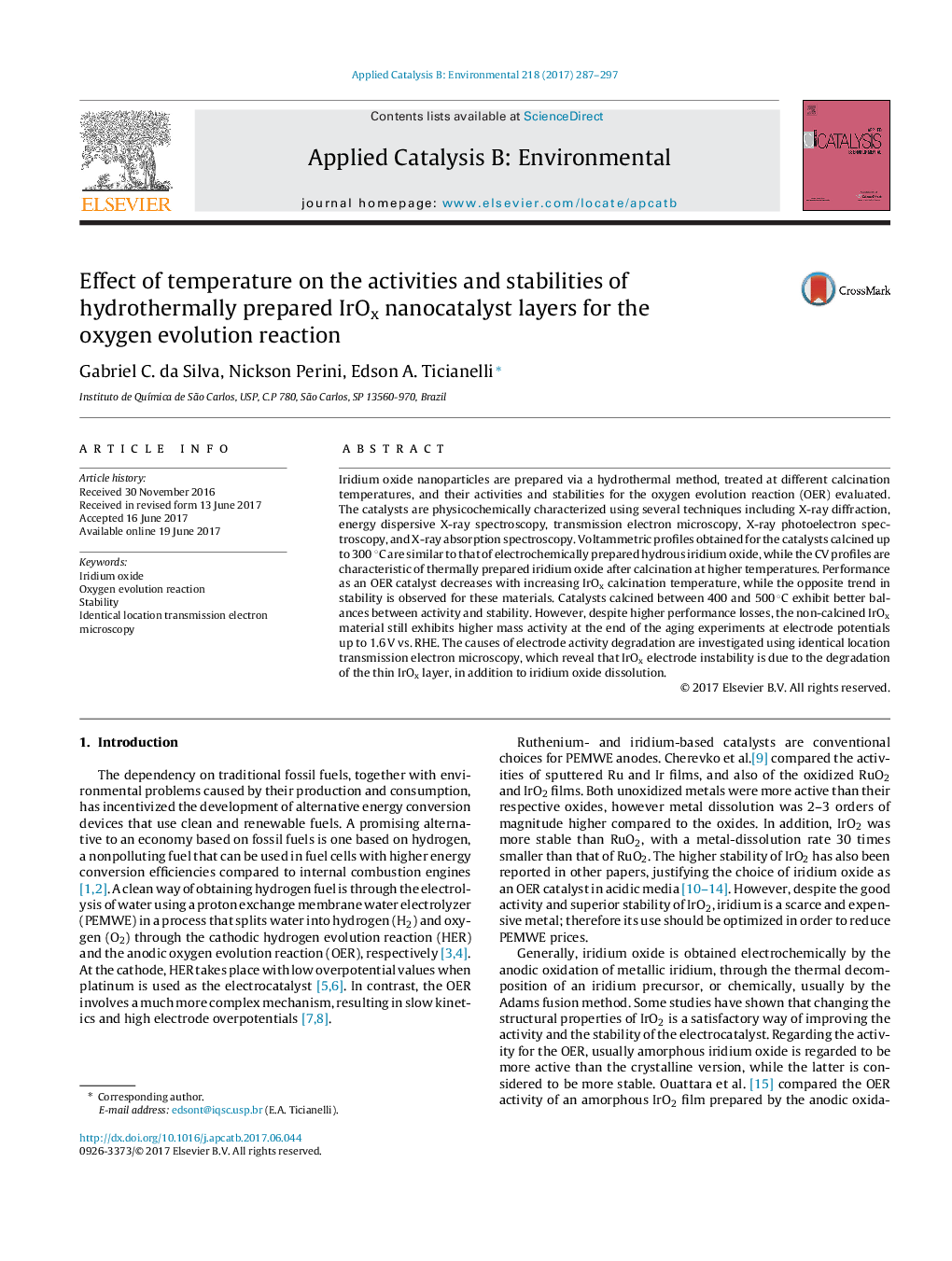| کد مقاله | کد نشریه | سال انتشار | مقاله انگلیسی | نسخه تمام متن |
|---|---|---|---|---|
| 6453741 | 1418802 | 2017 | 11 صفحه PDF | دانلود رایگان |

- Oxygen evolution reaction (OER) is investigated on calcinated hydrothermal IrOx.
- OER kinetics decreases while stability increases with calcination temperature.
- IrO2 calcinated at 400 °C and 500 °C shows better balance between specific activity and stability.
- Hydrothermal IrOx remains as the most active material for the OER after 1Â h OER.
- ILTEM shows that activity loss partially comes from IrOx thin layer degradation.
Iridium oxide nanoparticles are prepared via a hydrothermal method, treated at different calcination temperatures, and their activities and stabilities for the oxygen evolution reaction (OER) evaluated. The catalysts are physicochemically characterized using several techniques including X-ray diffraction, energy dispersive X-ray spectroscopy, transmission electron microscopy, X-ray photoelectron spectroscopy, and X-ray absorption spectroscopy. Voltammetric profiles obtained for the catalysts calcined up to 300 °C are similar to that of electrochemically prepared hydrous iridium oxide, while the CV profiles are characteristic of thermally prepared iridium oxide after calcination at higher temperatures. Performance as an OER catalyst decreases with increasing IrOx calcination temperature, while the opposite trend in stability is observed for these materials. Catalysts calcined between 400 and 500 °C exhibit better balances between activity and stability. However, despite higher performance losses, the non-calcined IrOx material still exhibits higher mass activity at the end of the aging experiments at electrode potentials up to 1.6 V vs. RHE. The causes of electrode activity degradation are investigated using identical location transmission electron microscopy, which reveal that IrOx electrode instability is due to the degradation of the thin IrOx layer, in addition to iridium oxide dissolution.
178
Journal: Applied Catalysis B: Environmental - Volume 218, 5 December 2017, Pages 287-297